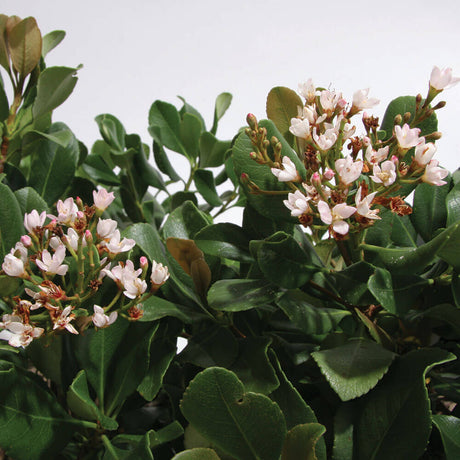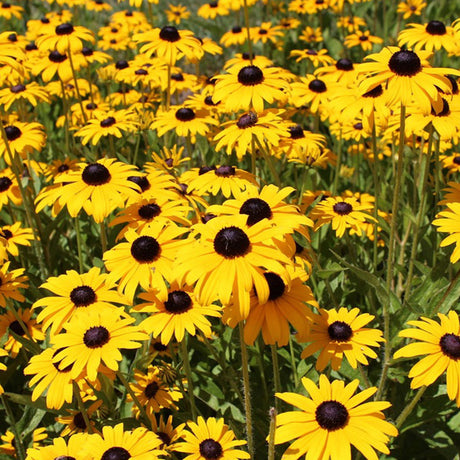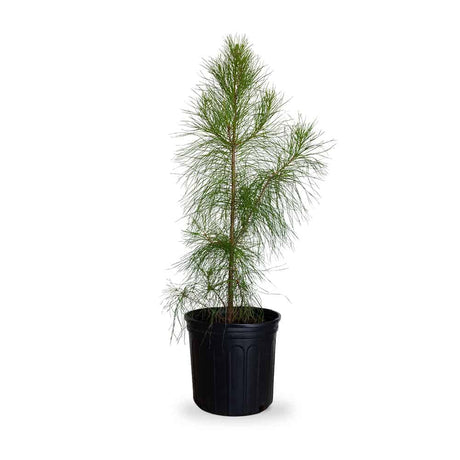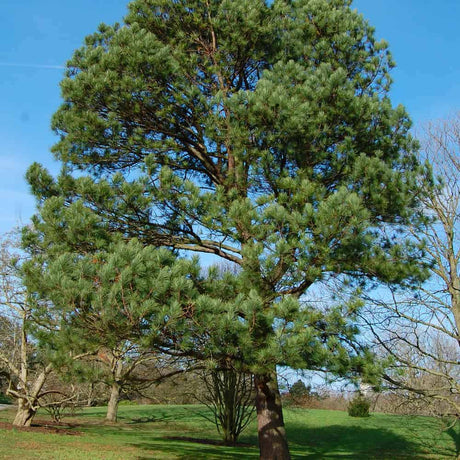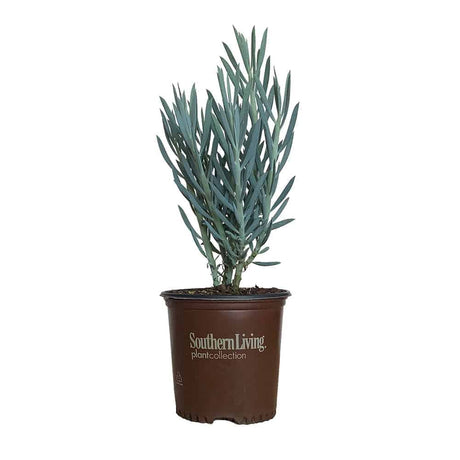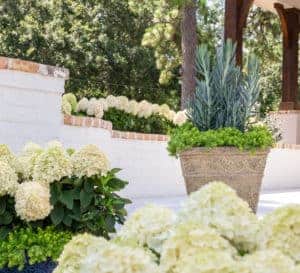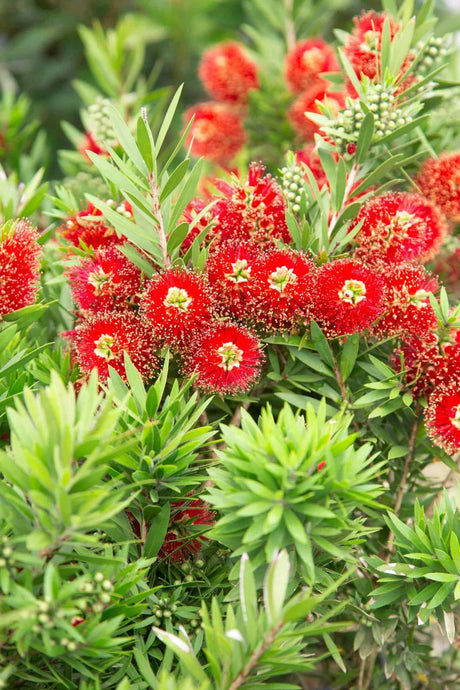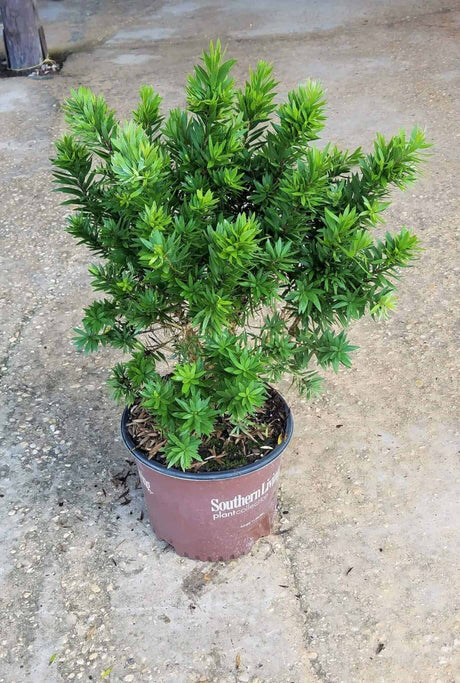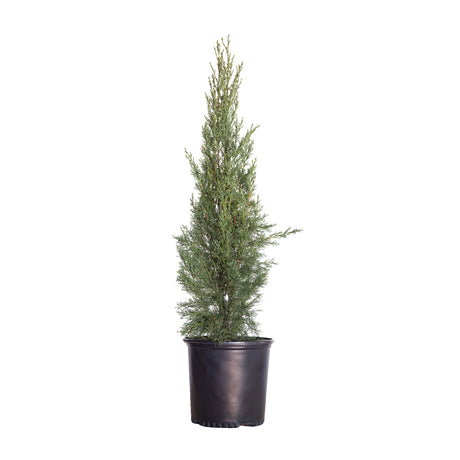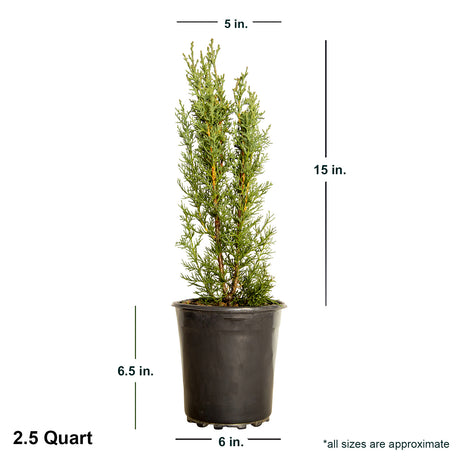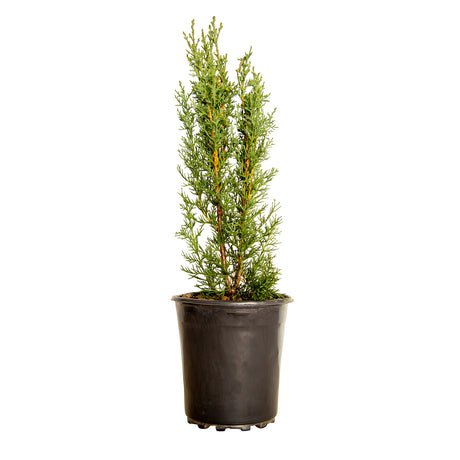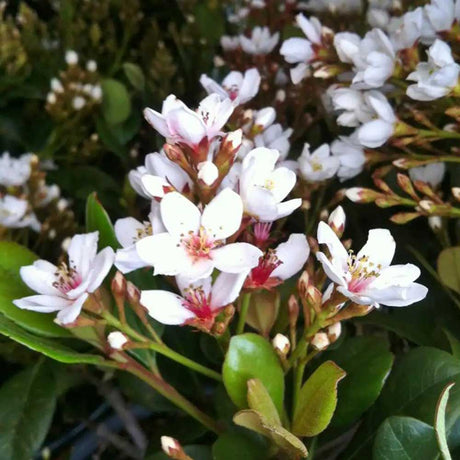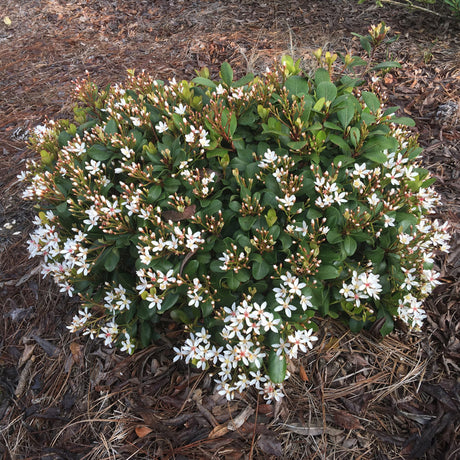FiltersFilter & Sort
Southern Living Plant Collection
From $21.98Unit price /UnavailableIn stock (20)Southern Living Plant Collection
$36.99Unit price /UnavailableLow stock (4)Southern Living Plant Collection
$36.98Unit price /UnavailableIn stock (210)Flowerwood
Carolina Sapphire Cypress (Arizona Cypress)
From $19.99Unit price /UnavailableIn stock (1407)Southern Living Plant Collection
$42.98Unit price /UnavailableIn stock (111)Southern Living Plant Collection
$36.99Unit price /UnavailableIn stock (121)Southern Living Plant Collection
Clean Sweep Snowbank Indian Hawthorne
$36.98Unit price /Unavailable
Xeriscaping focuses on conserving water by using drought-tolerant plants and reducing the need for irrigation. By adopting xeriscaping techniques, you can create a beautiful, sustainable garden that requires less maintenance and helps to conserve our precious water resources.
What is Xeriscaping?
Xeriscaping is a landscaping method designed to conserve water by creating gardens and landscapes requiring minimal irrigation. This sustainable gardening approach is gaining popularity, especially in areas with limited water resources or regions prone to droughts.
The principles of xeriscaping include selecting drought-tolerant plants, enhancing soil quality, and employing water-saving techniques. By carefully choosing plants adapted to the local climate and soil conditions, xeriscaping can produce stunning landscapes that thrive with minimal water requirements.
One of the primary benefits of xeriscaping is its positive impact on water conservation. Traditional landscapes often demand constant irrigation, increasing water usage and costs. With xeriscaping, the reliance on irrigation systems is minimized, resulting in substantial cost savings in the long run.
Choosing the Right Plants for Xeriscaping
Selecting the right plants is crucial for creating a successful and sustainable landscape in xeriscaping. Choosing plants well-suited to arid conditions allows you to develop a beautiful garden that thrives with minimal water usage.
Here are some criteria to consider when selecting xeriscaping plants:
- Drought Tolerance: Look for plants that have naturally adapted to dry environments. These plants have developed mechanisms to store water, reduce water loss, or tolerate drought.
- Low Water Requirements: Once established, choose plants with low water needs. These plants are more likely to survive and thrive in xeriscapes and require less irrigation and maintenance.
- Soil Adaptability: Consider plants that can adapt to various soil types commonly found in arid regions, such as sandy or rocky soil. These plants are better equipped to absorb water efficiently and withstand dry conditions.
When selecting drought-tolerant plants, it's essential to consider your specific region. Different regions have unique climates and varying levels of water availability. Native plants are often the best for xeriscaping as they naturally adapt to local conditions. They have evolved to withstand their specific region's climate, soil, and pests.
Native plants offer several advantages in xeriscaping:
- Water Efficiency: Native plants are already adapted to the local climate and rainfall patterns, making them naturally water-efficient. Once established, they require less supplemental irrigation.
- Ecological Benefits: Native plants provide habitat and food for local wildlife, including birds, bees, and butterflies. They also contribute to the area's overall biodiversity, supporting a healthy ecosystem.
- Low Maintenance: Native plants are well-suited to the local soil conditions and climate, reducing the need for excessive watering, fertilizing, or pest control. This makes them a low-maintenance option for xeriscapes.
By carefully selecting drought-tolerant plants and incorporating native species into your xeriscape design, you can create a sustainable and vibrant landscape that conserves water and enhances the beauty of your outdoor space.
Best Xeriscaping Plants for Various Garden Styles
Xeriscaping is a sustainable landscaping technique that helps conserve water and reduce maintenance needs. You can create a beautiful, water-wise landscape by choosing the right plants for your garden style. Here are some of the best xeriscaping plants for different garden styles:
Xeriscaping plants for desert gardens: In desert gardens, it's important to select plants that are adapted to arid conditions. Some great choices include Agave, Yucca, Desert Marigold, and Desert Spoon. These plants have evolved to thrive in hot, dry climates and can add texture and color to your desert landscape.
Xeriscaping plants for Mediterranean-style gardens: Mediterranean-style gardens are characterized by their warm, sunny climates and well-drained soil. Consider using plants like Lavender, Rosemary, Olive trees, and Bougainvillea to achieve this style. These plants tolerate drought and bring a touch of the Mediterranean to your outdoor space.
Xeriscaping plants for coastal landscapes: Coastal landscapes present unique challenges, such as strong winds and salt exposure. Opt for plants like Sea Holly, Mexican Evening Primrose, Sea Lavender, and Beach Sunflower. These plants are adapted to sandy soils and can withstand the harsh conditions of coastal regions while providing beauty and color.


